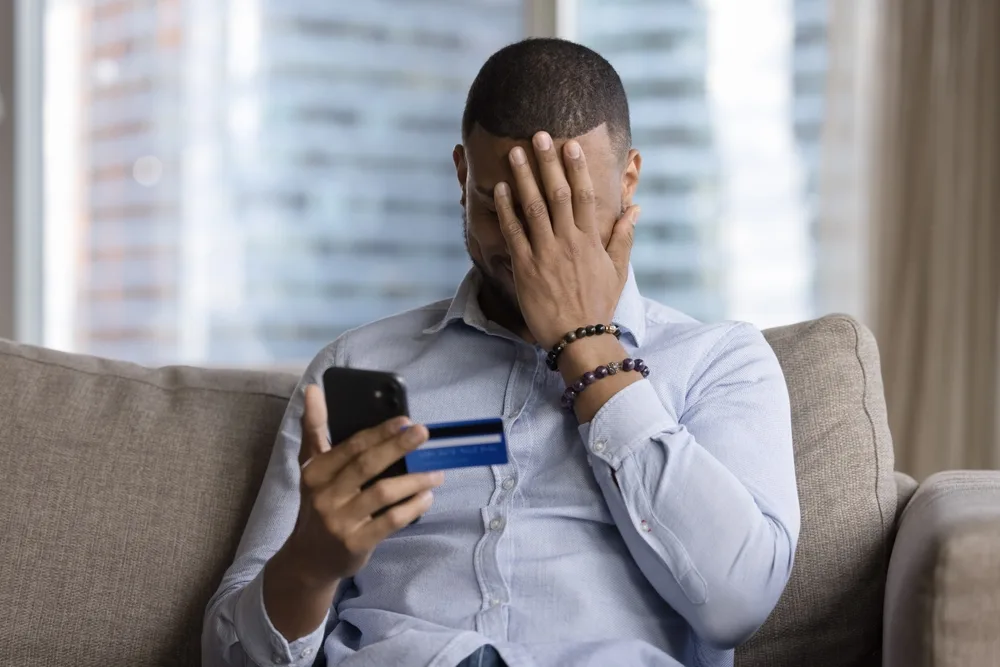Crime and Domestic Violence: Protecting People Who Are Blind or Low Vision
People who are blind or have low vision face unique challenges when it comes to crime and domestic violence. The Bureau of Justice Statistics shares that persons with disabilities, including vision loss, experience higher rates of victimization than those without disabilities. This article combines safety tips, updated data, and resources to help you protect yourself, know your rights, and find help if needed.

Domestic Violence
Domestic violence is a pattern of coercion, intimidation, and abuse meant to control another person. This abuse can take many forms, including verbal, emotional, and psychological abuse, as well as physical violence and sexual assault. It can also involve economic control, such as withholding money or access to banking, and neglect, which includes withholding medications, mobility aids, or daily care.
Unique Risks for Women with Disabilities
Women with disabilities face unique risks due to their potential dependence on caregivers, which can be exploited by an abuser who might withhold medication, mobility aids, or refuse to assist with daily living needs. A GAO report from 2024 notes that inaccessible services are a major barrier, as shelters, counseling, or printed safety information may not be available in braille, audio, or large print. These women may also be more vulnerable due to a lesser ability to physically defend themselves, lower self-esteem from stigma, and the fear of losing essential caregiving relationships.
Real Experiences
One survivor described her abuser locking away her wheelchair and cutting off her phone and internet access so she could not reach for help. Another survivor shared her experience of having her medications withheld, which left her in constant pain.
One Contributor’s Story

One contributor shared that her life changed forever when she lost her vision while two months pregnant. After an abusive incident that injured her head and neck, two unsuccessful eye surgeries left her completely blind with no light perception. Adapting to her new reality while carrying her daughter was overwhelming. She wore a neck collar for the first six months of her pregnancy and fought through depression, doubt, and fear. “I felt like my life was over. I asked, ‘How can God be real? I was beaten down and almost died.’”
The turning point came after giving birth when her doula taught her how to care for her daughter and, in the process, reminded her to care for herself. “She helped me want more for myself, too. I told myself, I need to do this for me to do this for my daughter.”
With encouragement, the contributor began taking small but important steps—getting out of the house, seeking perspective from friends, and searching for resources for blind parents. While she found domestic violence support groups and groups for parents of blind children, she discovered very little support for blind parents themselves. That realization led her to connect with the National Federation of the Blind of Pennsylvania. When encouraged to start her own support group, she did just that in 2021.
Looking back, she credits her daughter as the reason she survived and rebuilt her life. “I thought someone else would save me, but it was my daughter. God answered my prayers by bringing her into my life.”
Today, she continues to celebrate small moments—like feeling her daughter’s drawings—and works to model strength and independence for her child.
Key Takeaway
Domestic and sexual violence are never the victim’s fault. Abuse is always the choice of the perpetrator and is not caused by stress, disability, or circumstance.
Sexual Assault and Stalking
Sexual assault includes any unwanted sexual contact without explicit consent (RAINN, 2023). Stalking is defined as repeated unwanted attention or harassment that causes fear. For people with disabilities, stalking can include both physical following and online harassment (National Stalking Resource Center). Both are serious crimes that often escalate and should always be taken seriously.
Protecting Against Identity Theft
People who are blind or low vision may also be targeted for identity theft. Thieves can steal wallets, mail, or personal data online. Identity theft may also come from people close to you, such as acquaintances or even caregivers.

How Identity Theft Happens
Identity theft can occur through various methods. Thieves may steal wallets, purses, or mail. They might also use phishing emails disguised as legitimate companies to trick you into revealing personal information. Medical fraud, where a thief uses your health information to get treatment, and tax return fraud, where they file a tax return in your name to steal your refund, are also common forms of identity theft.
Prevention Tips
To protect yourself, you can take several precautions. When you go out, carry less and only bring essential IDs and cards, never your Social Security card. Shred sensitive mail such as medical bills, receipts, and bank papers. Be selective and use trusted, vetted people as caregivers and assistants. Do not share personal information unless you are certain who you are dealing with. It’s also important to check your accounts often by monitoring your bank and credit accounts regularly and to request your annual credit reports, which are available in braille or large print. For online safety, you should keep your antivirus software up to date, avoid oversharing on social media, and use strong passwords that include symbols and numbers. Only shop on secure, reputable sites, and be sure to delete unsolicited emails without clicking on any links.
If Identity Theft Occurs
If you become a victim of identity theft, you must act quickly. First, contact the credit reporting agencies (Equifax, Experian, TransUnion) to place a fraud alert or credit freeze. Then, notify any banks or companies where the fraud occurred. File a complaint with the FTC by calling 1-877-438-4338 or visiting identitytheft.gov. Finally, file a police report to officially document the crime.
Staying Safe and Seeking Help
When it comes to personal safety, it is crucial to trust your instincts—if something feels unsafe, it probably is. Have a “safety plan” in place, including someone you can call or text in case of an emergency. You can also ask local rehabilitation centers or blindness organizations about peer support and safety workshops.
Resources for Victims and Survivors
If you or someone you know is a victim of violence or crime, help is available. The National Domestic Violence Hotline can be reached at 1-800-799-SAFE (7233) or 1-800-787-3224 (TTY), and is available 24/7 in English, Spanish, and 129 other languages. The RAINN (Rape, Abuse & Incest National Network) hotline is 1-800-656-HOPE. Additional organizations include the NNEDV (National Network to End Domestic Violence), which provides advocacy and support programs, and the Abused Deaf Women’s Advocacy Services, which supports Deaf and Deaf-Blind survivors. For stalking victims, the National Stalking Resource Center offers resources. Finally, the Federal Trade Commission (FTC) provides guidance on identity theft and consumer protection.
Final Thoughts
People who are blind or low vision have the same right to safety and dignity as anyone else. While statistics show higher risks, knowledge, preparation, and accessible resources can reduce vulnerability and empower survivors. If you or someone you know is experiencing violence or identity theft, please reach out to the resources listed above. You are not alone, and help is available.
Citations Included
- GAO (2024). Federal Domestic Violence Assistance: HHS Should Assess Accessibility. GAO-24-106366.
- Bureau of Justice Statistics (2014, 2019, 2023). Crime Against Persons with Disabilities; Criminal Victimization 2023.
- CDC (2022). Intimate Partner Violence and Sexual Violence Among People with Disabilities.
- RAINN (2023). Sexual Violence Statistics and Hotline Information.
- National Stalking Resource Center (2023).
- FTC (2023). Identity Theft Protection and Recovery Resources.